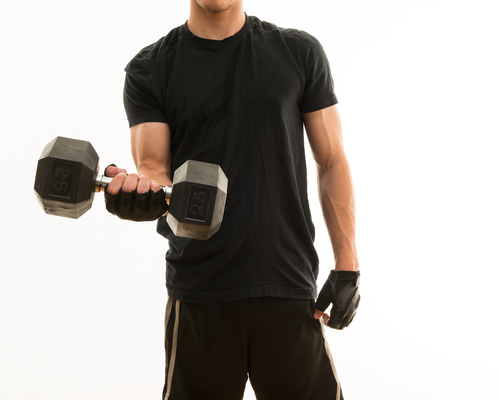Think Your Way To Bigger Muscles
By Dan Peterson, TeamSnap's Sports Science Expert
It’s time for your New Year’s resolution action plan. Remember, this is the year that you committed to actually adding resistance training to your workouts. However, maybe you’re not quite ready to jump in and split reps with the big boys at the gym. If only you could just think about working out to get bigger. Along comes our hero, Brian Clark, professor of physiology at Ohio University, who just reported on a new study that claims you can do exactly that: think your way to muscle growth.
His discovery comes from previous research by others that there is always more to strength than just skeletal muscles. It starts with our brain giving instructions to our muscles as to when and how much to contract. Take for example an injured athlete who has his/her arm in a cast for two months. Not only is the arm immobilized, but the athlete rarely thinks about activating the muscles.
But what exactly is the level of influence of the brain over muscle growth, or at least maintaining existing muscle? Professor Clark recruited 29 volunteers to wear a cast on both arms, from just below the elbow to the fingers, for one month. Fifteen additional volunteers made up a control group and did not wear a cast. Everyone’s wrist flexor strength was tested prior to the experiment.
Next, half of the cast-wearing group were asked to go through a series of imaginary exercises for their wrists. Five times per week for four weeks, they spent 20 minutes pretending they were flexing their wrist against a heavy object. Clark and his team would tell the volunteers, "Begin imagining that you are pushing in as hard as you can with your left wrist, push, push, push…and stop. (Five-second rest). Start imagining that you are pushing in again as hard as you can, keep pushing, keep pushing…and stop. (Five-second rest)."
The researchers were careful to make sure that the volunteers didn’t actually flex their wrists under the casts, but only thought about flexing. The other half of the group with casts were not asked to do any mental exercise.
Now the payoff we’ve all been hoping for. After four weeks, Clark found that all of the casted volunteers lost strength in their wrists when compared to the control group. However, the group that exercised with their brain lost 50% less strength than those that did nothing. Also, their voluntary activation, the nervous system’s ability to crank up the muscle when needed, also came back much more quickly for the group who thought about wrist movement.
The research is published in the Journal of Neurophysiology.
"These findings suggest neurological mechanisms, most likely at the cortical level, contribute significantly to disuse-induced weakness, and that regular activation of the cortical regions via imagery attenuates weakness and VA by maintaining normal levels of inhibition," wrote Clark. "Thus our findings that imagery attenuated the loss of muscle strength provide proof-of-concept for it as a therapeutic intervention for muscle weakness and voluntary neural activation."
Of course, those reps at the gym will get you ripped much faster, but its good to know that you can help the process just sitting at a red light.
NEW! Free Sports Organization Resources
All of TeamSnap's ebooks, articles, and stories in one place. Access Now
Similar Articles:

Think Your Way To Bigger Muscles
By Dan Peterson, TeamSnap's Sports Science Expert …
Read More

Computer Simulation Shows the Importance of Arm Muscles for Baseball Pitchers
By Dan Peterson, TeamSnap's Sports Science Expert …
Read More

Just One Minute of Intense Exercise Will Get Healthy Benefits
By Dan Peterson, TeamSnap's Sports Science Expert …
Read More
